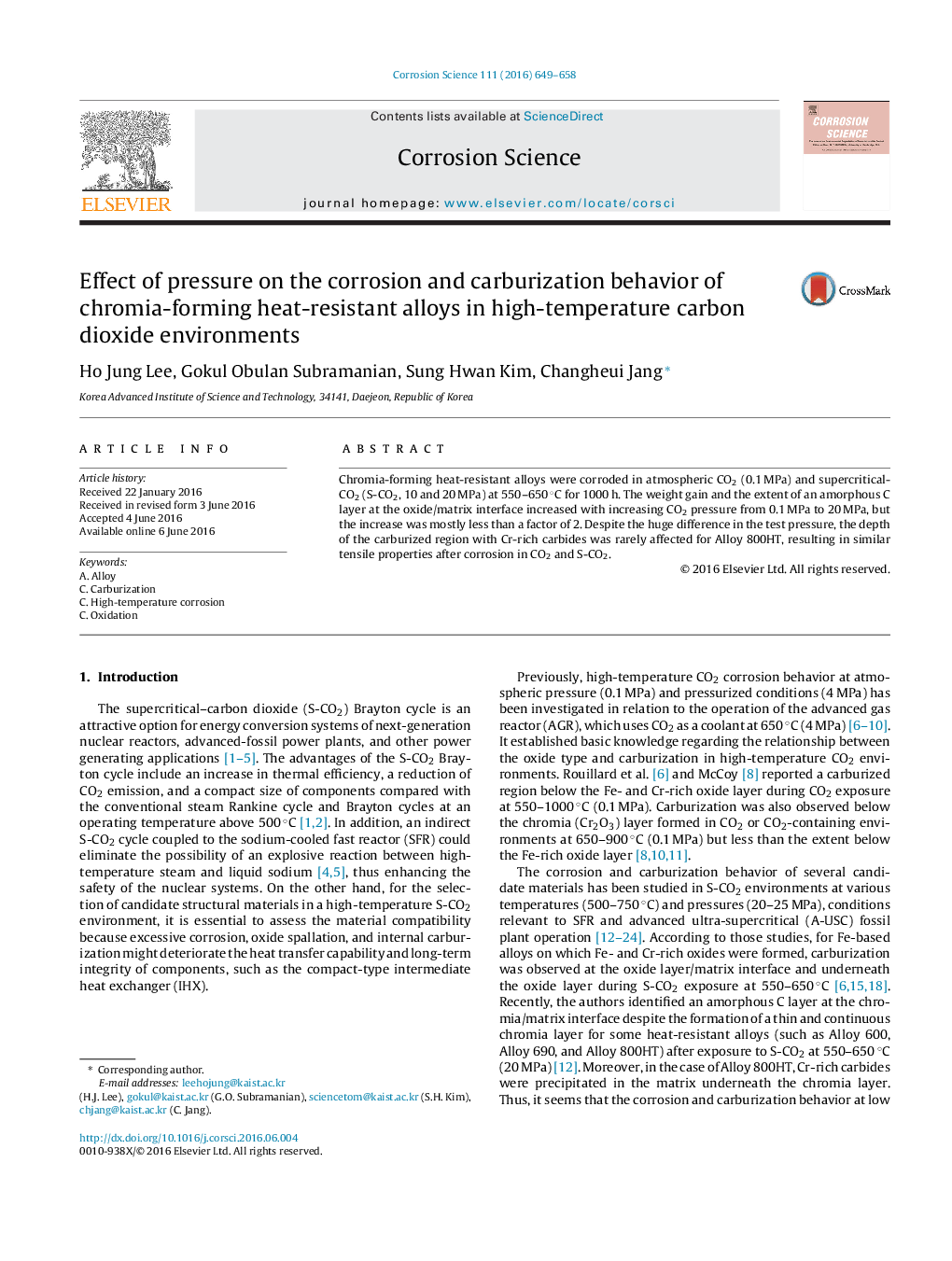| Article ID | Journal | Published Year | Pages | File Type |
|---|---|---|---|---|
| 1468332 | Corrosion Science | 2016 | 10 Pages |
•Heat resistant alloys were corroded in high temperature CO2 at 0.1–20 MPa.•Oxide layer thickness increased by less than factor of 2 with pressure increase.•Width of amorphous C layer at oxide/matrix interface increased about factor of 2.•For Alloy 800HT, the depth of region with Cr-rich carbides was not affected.•Tensile properties of alloys corroded in CO2 at 0.1–20 MPa were similar.
Chromia-forming heat-resistant alloys were corroded in atmospheric CO2 (0.1 MPa) and supercritical-CO2 (S-CO2, 10 and 20 MPa) at 550–650 °C for 1000 h. The weight gain and the extent of an amorphous C layer at the oxide/matrix interface increased with increasing CO2 pressure from 0.1 MPa to 20 MPa, but the increase was mostly less than a factor of 2. Despite the huge difference in the test pressure, the depth of the carburized region with Cr-rich carbides was rarely affected for Alloy 800HT, resulting in similar tensile properties after corrosion in CO2 and S-CO2.
